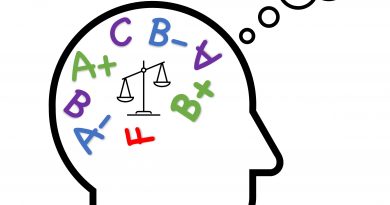Giving Feedback on Student Writing
By Kristina Aikens, PhD, Program Director, Writing Support, StAAR Center
This is part 2 of a two part series from the Tufts Writing Center, which works with students in the Schools of Arts and Science, Engineering, the SMFA and Fletcher.
When I talk with instructors about student writing, many identify commenting on and grading papers as a persistent challenge in terms of emotional labor and time commitment. Some of this difficulty arises from assigning grades to writing, but much of it comes from uncertainty about how many or what types of comments to give or from a sense of obligation to comment on every aspect of a piece of writing they feel could be improved. This post describes some of the mindsets that make responding to student writing difficult and suggests more equitable and transparent approaches that can also alleviate some stress from the instructor’s role.
In a genuine effort to help students, many instructors overwhelm them with comments on their writing. This especially occurs with multilingual students. Instead of recognizing the incredible skill it takes to write at a high level in a second or third language, many instructors focus only on what they see as a deficit. While strengthening English fluency is part of the experience of multilingual students in the American academy, the experience of receiving heavily copy-edited or rewritten sentences is usually more confusing and demoralizing than helpful.
When I ask faculty how they learned to write, many describe a harsh experience: an instructor who scoffed at their writing style, who “ripped apart” their writing, who re-wrote their sentences expecting the writer to understand and learn from those edits. These stories are worn as a badge of honor, a commitment to learning to write well. We often think the way we learn is the best or only way to learn; however, while harsh feedback can be motivating for some, most students would develop an aversion to writing from such an experience.
None of this means we can’t be critical, but it does mean we should be intentional.
In her seminal article in the field of composition studies, “Responding to Student Writing” Nancy Sommers describes the frustration and even hostility that often comes through in instructors’ written feedback while acknowledging that this frustration certainly stems from limits on instructors’ time and energy. She discusses the biases instructors bring to reading student writing—most crucially an expectation of error—and she points out that failing to prioritize comments often confuses students and tends to elevate small edits to the same level as larger, more complex revisions.
In “Teaching Antiracist Reading,” Asao Inoue encourages instructors to teach students a practice of mindful reading in which readers slow down, notice our feelings while reading (and separate those feelings from what is actually on the page), and examine our biases and assumptions. The eventual goal of this mindful reading is to practice noticing what he calls “habits of White language and judgment.” Inoue goes into detail about each of the habits he identifies, but they include common traits embedded in academic writing, such as universalizing one’s personal experience; privileging individuality over community or systems; and favoring rationality, order, and control over feelings or embodiment.
While Inoue’s stated approach is to teach antiracist reading, these habits are worth examining in how we read and respond to student writing. What do we privilege and what do we consider “inappropriate” or “incorrect” languages or styles?
Bringing more intentionality to our responses to student writing can alleviate some of the stress at the end of the semester and can even bring more enjoyment into reading student writing. More importantly, we can help students take ownership of their writing and its processes while approaching our feedback from a more equitable lens.
Suggestions for More Transparent and Equitable Responses to Student Writing:
Respond verbally: Consider building time in the drafting process for brief student conferences about portions of their drafts. Encourage students to visit the writing center for support around getting started with the process, developing their ideas, and discussing drafts in progress for organization and argumentation. Instead of writing comments on final papers, some faculty find it beneficial to record a verbal response.
Set Intentions: What are your priorities for student writing? What about writing would you like students to understand by completing the assignment you give them? Taking this a step further, what about your writing goals are based in concepts the student really needs to know—things about the discipline, things they can apply in other disciplines—and what is based on personal preferences, your racial and educational background, or how you yourself learned?
Convey Expectations: Tell students why you are assigning writing, what you hope they achieve, and what kinds of comments they can expect. Consider having students write reflections on their process or asking them what kind of feedback they most need (this can be especially useful for graduate student writers who will likely receive several rounds of feedback—and who often suffer from getting too much copy-editing on a first draft).
Develop a Process: Think about how you want to comment on final papers before you sit down to do it. Some faculty develop rubrics, though it might be enough simply to identify and remind yourself of your priorities. Read the paper through once before making any comments on it. Try using Inoue’s strategies for antiracist reading. Break up the time you spend commenting on final drafts so that you can refocus and keep your responses fresh.
Limit and prioritize your comments: Resist the urge to comment on every line. While commenting on each paragraph might work well, sometimes it can be enough simply to provide a summary comment, or to limit comments to one or two per page. Help the student prioritize what to pay attention to by addressing the most important aspects of their writing. Be specific about what the writer is doing well along with what could be strengthened.
Limit sentence-level edits: Avoid rewriting students’ sentences; rarely have I observed this being anything but baffling for a student. Similarly, grading grammar (or even having points in a rubric for grammar and mechanics) tends to produce anxiety and misplaced attention. Try to set aside your writing preferences and focus on clarity: point out places where you’re confused and try to explain your confusion. Instead of marking everything that looks like an error, choose a few specific points to make. Remember to highlight particularly clear or graceful writing as well.
Remember the writer’s process: Just as it’s helpful to have a process for your approach to commenting on papers, remember that students are involved in a process of learning more about their own writing. If you engage with students’ thinking, encourage them to reflect, and avoid overemphasizing details, you’ll help them get to the next stage in that process.
Special thanks to the Writing Fellows Program faculty for their input in developing these suggestions.
See Also
Part 1: Reconsidering Academic Writing from a Culturally-Informed Perspective
Reconsidering and Revaluing Academic Writing in the Age of AI




